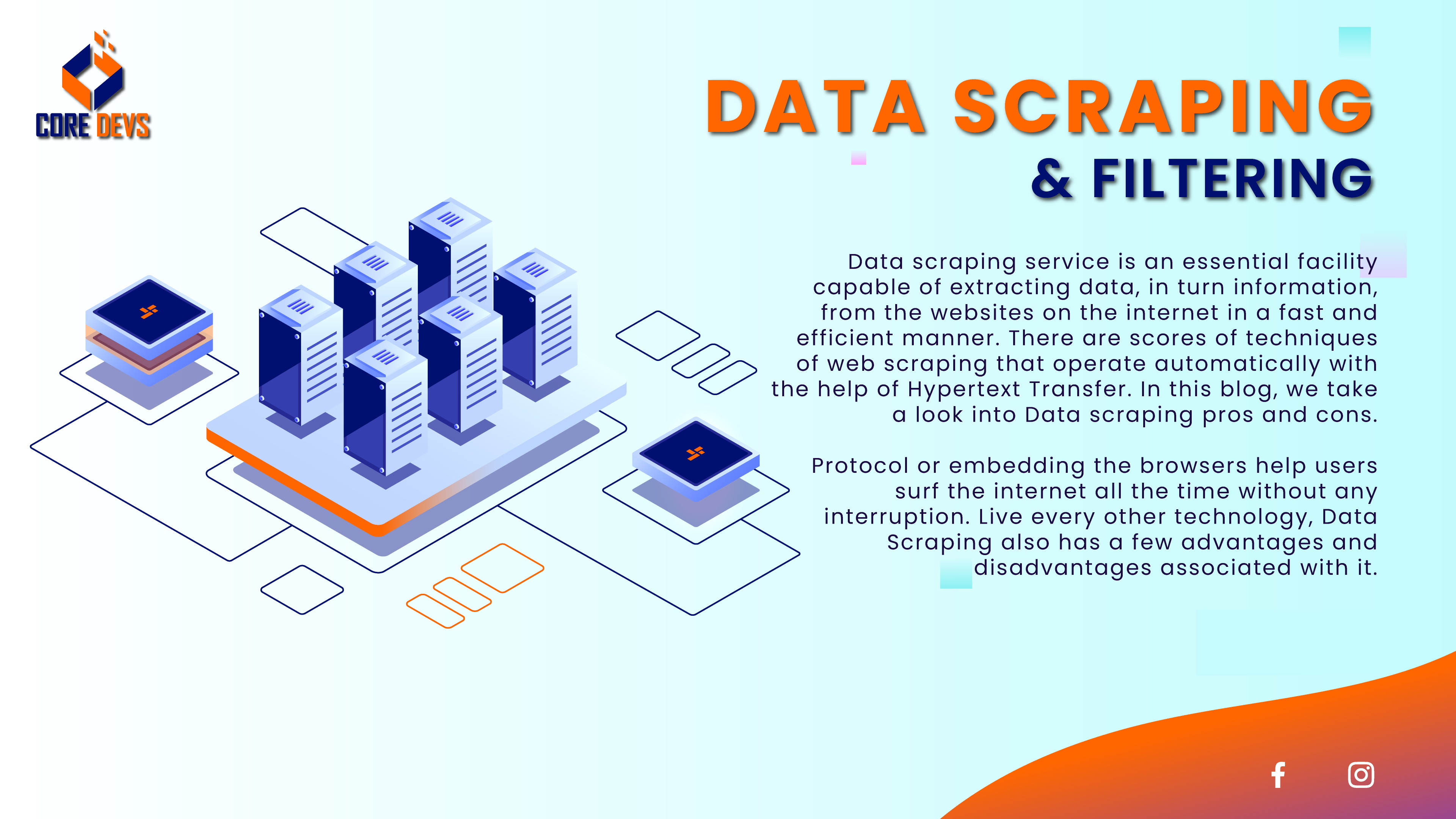Data Scraping & Filtering
Data scraping is a technique where a computer program extracts data from human-readable output coming from another program. Data scraping, also known as web scraping, is the process of importing information from a website into a spreadsheet or local file saved on your computer. It's one of the most efficient ways to get data from the web, and in some cases to channel that data to another website.

The history of data scraping dates back nearly to the time when the World Wide Web was born. After the birth of the World Wide Web in 1989, the first web robot, World Wide Web Wanderer, was created in June 1993, which was intended only to measure the size of the web.
Data scraping is integral to the process because it allows quick and efficient extraction of data in the form of news from different sources. Such data can then be processed in order to glean insights as required. As a result, it also makes it possible to keep track of the brand and reputation of a company.

Another,data filtering is the task of reducing the content of noise or errors from measured process data. It is an important task because measurement noise masks the important features in the data and limits their usefulness in practice. It is the process of choosing a smaller part of your data set and using that subset for viewing or analysis. Filtering is generally (but not always) temporary – the complete data set is kept, but only part of it is used for the calculation. It is done to make it easier to focus on specific information in a large dataset or table of data.
